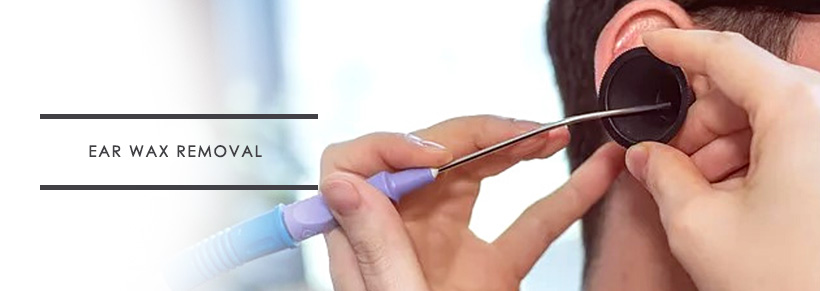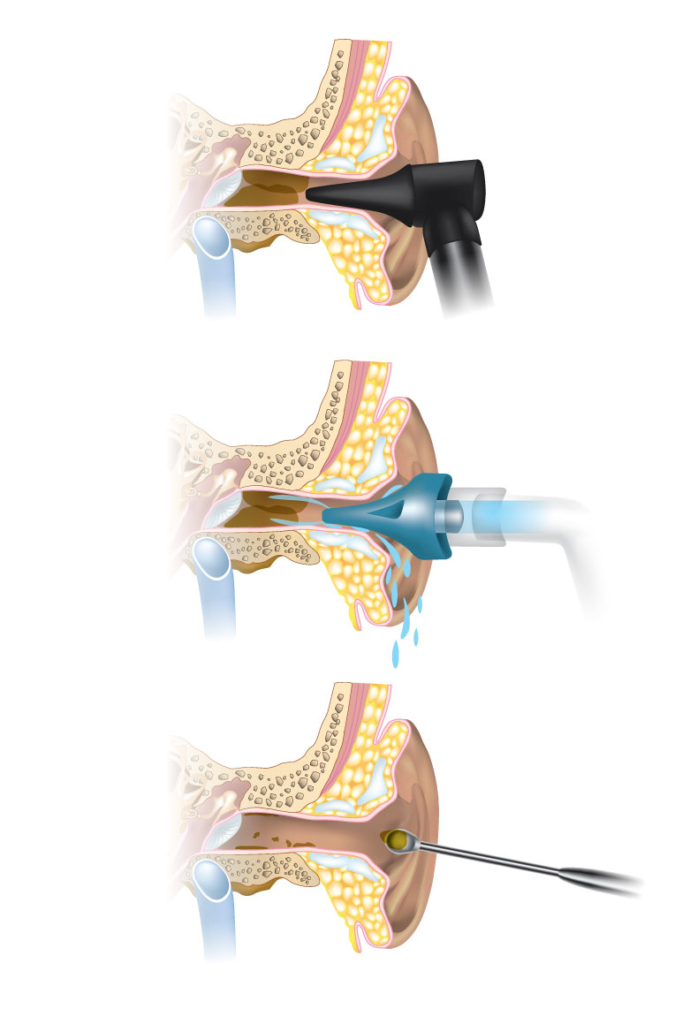

Ear Wax Removal
Have you got blocked ears? If you are suffering from a build-up of ear wax which is blocking your ear; causing hearing loss, tinnitus, dizziness or discomfort - then micro suction is the recommended treatment for you.
There are two distinct types of ear wax - the dry type and the wet type. The type of ear wax a person has is mostly determined by their genetic makeup.
- Dry Ear Wax: People of East Asian descent are more likely to have dry earwax, which is gray and flaky in appearance. This type of ear wax is less sticky than the wet type and may fall out of the ear canal on its own.
- Wet Ear Wax: People of African and European descent are more likely to have wet ear wax, which is brown or yellowish in appearance. This type of ear wax is more sticky and may require cleaning to prevent buildup. Ear wax is completely normal and plays an important role in keeping our ears healthy.
Microsuction
Microsuction is the quickest and most convenient way to get excessive ear wax removed. Microsuction can be carried out on damaged ears, including those with perforated eardrums, past surgery and other conditions which make syringing impossible or dangerous. It is a specialised service but it is currently not sufficiently regulated, and it’s therefore very important to choose a trusted and experienced provider who has adequate training and insurance. A provider should ask questions about your hearing and medical history, and explain risks ahead of the procedure.
Microsuction is a good place to start if you are planning on having custom hearing aids made, and wish to ensure the best possible fit. If you know you are prone to excessive wax and are in need of a hearing test, it can be a good idea to have them cleaned out thoroughly before starting your hearing care journey.
However, ear wax can also build up excessively and ear wax blockages can occur, which can result in a range of symptoms. The problem can be easily detected and treated by the specialists at our clinic.

The ear wax has three major roles:
Cleaning: Ear wax has antimicrobial properties and studies have found it helps protect the ear against a range of bacteria.
Guarding against bacteria: Modern studies have provided evidence of the how ear wax can reduce the viability of a range of bacteria. For example, Haemophilus influenzae, Escherichia coli and Staphylococcus aureus can sometimes be reduced by up to 99%. This is due to the slight acidity of the cerumen and the presence of saturated fatty acids and lysozyme.
Lubrication: Ear wax acts as a natural lubricant, preventing the ear canal skin from drying out.
What is earwax?
Earwax is a naturally occurring substance that is formed in the ear canal. It helps to keep the ears moist and protects them from dust, bacteria, irritation, and even insects. Earwax spontaneously makes its way from a point about halfway down the canal to the exterior of the ear, thus most individuals do not need to remove it. This is because our ears are "self cleaning."
Some individuals may struggle with an excessive amount of earwax, or it may become lodged in their ear canals. In these circumstances, people may have pain or a reduction in their hearing, both of which may be improved by having the earwax removed. Earwax removal performed by our trained specialists is a risk-free and very efficient method for resolving these concerns.
How can I tell whether I need to clean the earwax out of my ears?
You shouldn't even need to remove earwax because our ears are self-cleaning. However, for certain people, earwax issues in either one or both ears might result in the following:
- Partial hearing loss
- Muffled sounds
- Tinnitus (buzzing or ringing in the ears)
- Earache, itching or discomfort
- Itchiness, within the inner parts of the ear
As this service is intended for people who have excessive earwax, it's crucial to confirm that any symptoms you have are due to earwax and not an illness or other issue. People who frequently require ear wax removal include:
- In-ear headphone users
- Hearing aid users
- Regular users of cotton bud
- People who often wear earplugs
Get in touch with one of our professionals on if this is the first time you've experienced these symptoms, if you have additional symptoms, or if you're simply not sure.
What if I don't have my ear wax removed?
Your ears are able to clean themselves. This indicates that you shouldn't need to get your ear wax removed if your ears generate a regular amount of ear wax over a period of time.
But if your ears create an abnormally high amount of ear wax, it can accumulate and cause blockages in the ear canal. This can result in a variety of unpleasant symptoms, such as a fullness in the ear, tinnitus (ringing in the ears), earache, and even hearing loss in severe cases.


